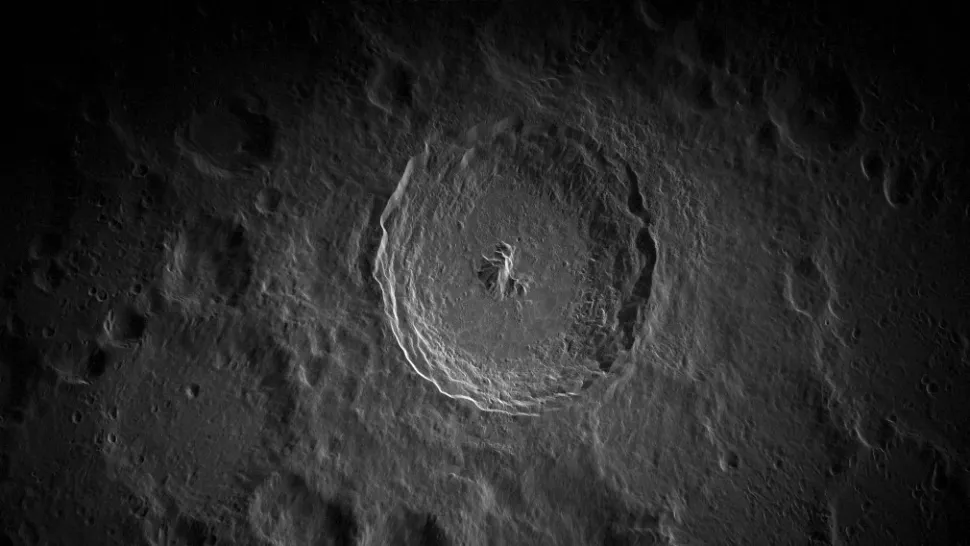!The highest resolution pictures of the moon's surface ever taken from Earth

Researchers have produced the highest-resolution images of the Moon ever taken from Earth, using a radar beam that is less powerful than a microwave oven beam.
The stunning new images, presented Jan. 10 during a news conference at the 241st meeting of the American Astronomical Society (AAS) in Seattle, Washington, capture the landing site of NASA's Apollo 15 mission as well as Tycho Crater, a prominent impact feature in the southern lunar highlands.
The researchers took the images using the 330-foot (100-meter) Green Bank Telescope (GBT) in West Virginia — currently the world's largest radio telescope (a type of telescope designed so that its dish can be pointed to different parts), said Patrick Taylor. , chief of the radar division at the Green Bank Observatory and the National Radio Astronomy Observatory (NRAO), during the press conference.
He added that the GBT emitted radio waves that lit up the lunar surface, and their echoes were picked up by an array of four 82-foot (25-meter) wide radio telescopes at the Very Long Baseline Array in Hilo, Hawaii.

The prototype radar device on the GBT transmits only 700 watts of power, Taylor said, "comparable to a household appliance or a group of light bulbs." He added, however, that he could identify features around the Apollo 15 landing site as small as 5 feet (1.5 metres) and those in Tycho Crater as small as 16 feet (5 metres).
Taylor said the researchers also used the tool to capture data on an asteroid roughly 0.6 mile (one kilometer) across that our planet squeezes more than five times the distance from Earth to the moon.
Because of its size and orbit, the asteroid is characterized as potentially dangerous, but Taylor said that the body does not pose any danger to Earth at this time, and the tool can not only see the asteroid, but also determine its size, speed, rotation, composition and danger.
The team would like to develop a more advanced version of the same machine capable of transmitting about 700 times more power, or about 500 kilowatts. Such a system could be used to conduct geological studies of the moon, search for space debris around our natural satellite, as well as search for and identify asteroids that might threaten our planet.
This will enable GBT to interfere with the famous Arecibo Observatory in Puerto Rico, which was previously the largest radio telescope used for similar purposes but which collapsed in 2020.
Source : websites

